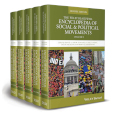Dramaturgy and Social Movements
Abstract
Social movements are replete with drama. Indeed, some observers have suggested that social movements are dramas. Benford and Hunt define social movements as dramas in which protagonists and antagonists clash as they seek to affect audiences' interpretations of power relations in various institutional domains (e.g. religion, politics, economy, etc.). Drawing on Goffman's dramaturgical perspective in which the theater provides a metaphor for analyzing everyday life, social movement scholars have examined how movement activists construct and communicate grievances in a fashion that maximizes their potential impact on social change. Often that entails deploying dramatic tactics that capture the attention of media, targets of change, bystander publics, and potential recruits. The US civil rights movement, for example, consistently employed a variety of nonviolent direct action tactics, including lunch-counter sit-ins, boycotts, freedom rides, marches, and other forms of civil disobedience in defiant protest of racial segregation. As the civil rights leaders intended, many of these tactics elicited a violent response from their opponents. The movement's disruptive actions and the repressive actions of local authorities yielded dramatic news coverage and hence increased popular and political support for their cause.



